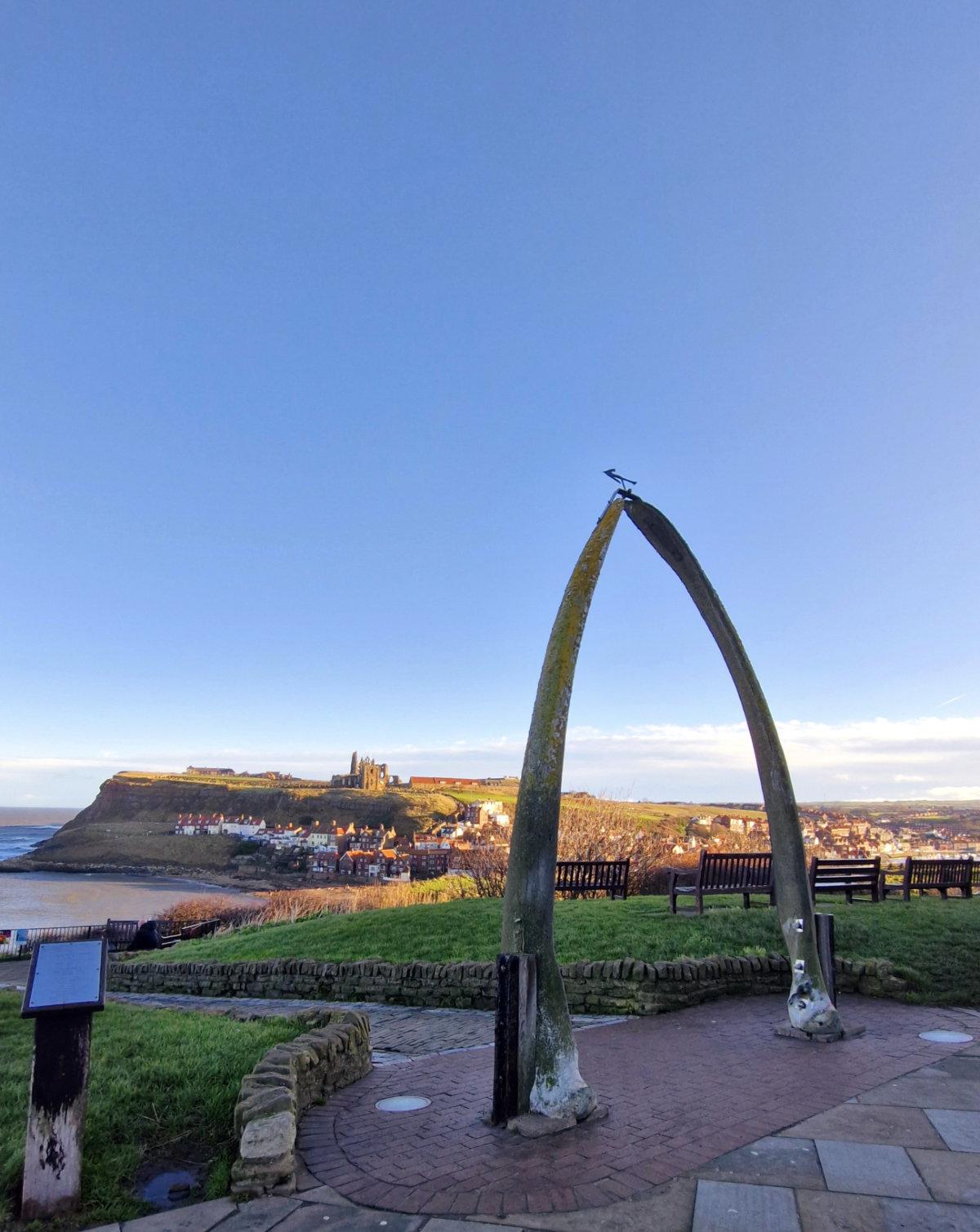Whitby Whale Bone Arch
The Whitby Whale Bone Arch frames a scene of Whitby coastline which includes the ruins of the medeival Whitby Abbey.
The whaling industry was thriving in the 18th and 19th centuries in the seaside town of Whitby in North Yorkshire. Ships departed Whitby to the Arctic seas off Greenland to hunt for their whale oil.

This was a dangerous occupation that provided not only employment for the townsmen, but money. Ships capsized, crew members suffered from hypothermia and boats were crushed by ice. So why did these men do it?
Money. There was a lot of money to be made from whales. The blubber was brought back to Whitby and used to make soap, leather, and cosmetics. Whale oil was used in candles and oil lamps. The remains were also used to make manure, Prussian Blue dye and ammonia.

Due to the risk of this endeavour on the return of a fleet of ships, crews would tie a whale’s jaw bone atop the ship’s mast as a sign that they had killed the whale, and not suffered themselves.
A whale bone arch was erected on Whitby’s West Cliff in 1853. This is the third arch to stand in this spot, in 1963 the bones were replaced from a 113-ton Fin whale killed by a Norwegian whaling ship. In 2003 the whale arch was replaced again with a Bowhead whale killed legally by native Alaskan Inuits. The original bones were given to the Whitby Archive Heritage Centre.
Where
Whitby Whale Bone Arch, North Terrace, Whitby, YO21 3HA
Click here for more what to see suggestions





